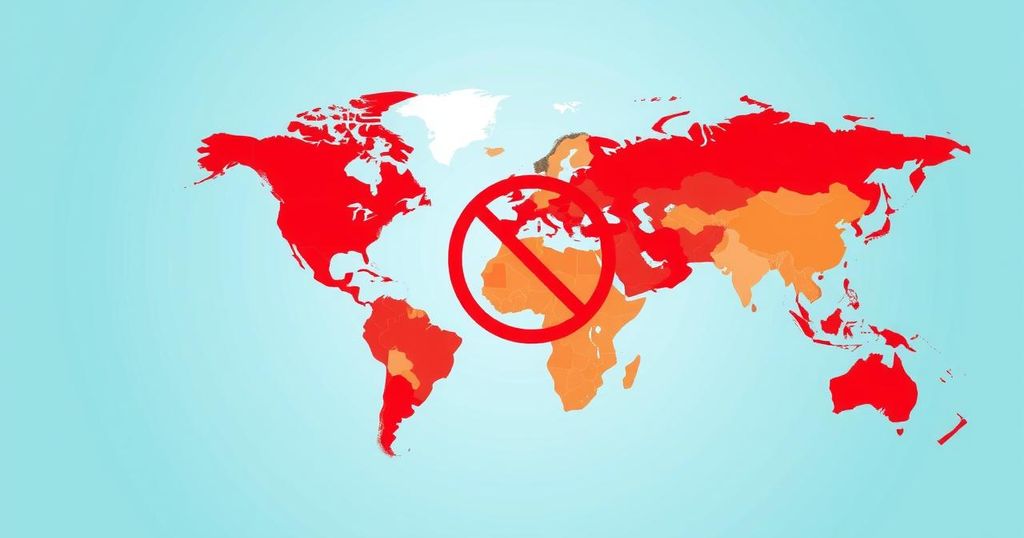Trump Proposes Travel Ban Targeting 43 Countries: Key Updates to Know

President Trump has proposed an expanded travel ban affecting forty-three countries classified under a three-tier system designed to enhance U.S. national security. The tiers, labeled red, orange, and yellow, delineate the severity of restrictions based on each nation’s vetting capabilities. Citizens of red list countries face total bans, while those from orange countries will require additional vetting. Yellow list countries must improve their processes within 60 days to avoid stricter measures.
President Donald Trump has proposed a broadened travel restriction for his second term, encompassing forty-three nations under a new three-tier framework. This initiative is part of an executive order dated January 20, which empowers cabinet members to designate countries whose citizens should face restrictions enhanced by concerns over insufficient vetting and screening processes, thereby aiming to augment national security.
The proposed travel ban follows an earlier ban enforced during Trump’s first term and aspires to limit entry from nations deemed high-risk. Although the proposal, developed by the U.S. State Department, remains in draft form, it is subject to modifications before finalization. The draft system classifies countries into three categories—red, orange, and yellow—which will determine the severity of travel restrictions imposed.
The “red” category comprises 11 nations banned entirely from entering the United States due to grave inadequacies in their vetting protocols, as these deficiencies pose a significant national security threat. According to the current plan, citizens from these countries will be strictly prohibited from U.S. entry to reinforce security measures in response to ongoing global issues.
The “orange” list consists of 10 countries whose citizens will face limited restrictions. These individuals will not be barred entirely; however, they will be required to complete additional vetting steps, including in-person interviews, prior to obtaining a visa. These nations have been recognized for inadequacies in their vetting processes and are under careful observation by the U.S. authorities to ensure remediation.
Lastly, the “yellow” category encompasses 22 countries, primarily from Africa, allocated a timeframe of 60 days to rectify noted deficiencies in their vetting systems. States that fail to do so risk being elevated to either the red or orange lists, facing stricter prohibitions as a consequence of inadequate action.
This travel ban exemplifies Trump’s persistent endeavors to fortify U.S. borders and safeguard citizens from potential threats. The January 20 executive order underscores the necessity of barring individuals from the U.S. who may represent security risks, including those associated with terrorist activities or criminal enterprises. In contrast, former President Joe Biden annulled Trump’s travel bans on his inaugural day in office in 2021, contending that such prohibitions contradict the American ethos of embracing people from various backgrounds.
In summary, President Trump’s proposed travel ban targetting forty-three nations is structured into three distinct categories: red, orange, and yellow. The red list denotes complete bans on specific countries, while the orange list imposes limited restrictions requiring additional vetting. The yellow list countries must address deficiencies within a specified period to avoid stricter prohibitions. This initiative reflects Trump’s ongoing focus on national security and immigration policies, reversing the changes made by the previous administration.
Original Source: www.travelandtourworld.com








